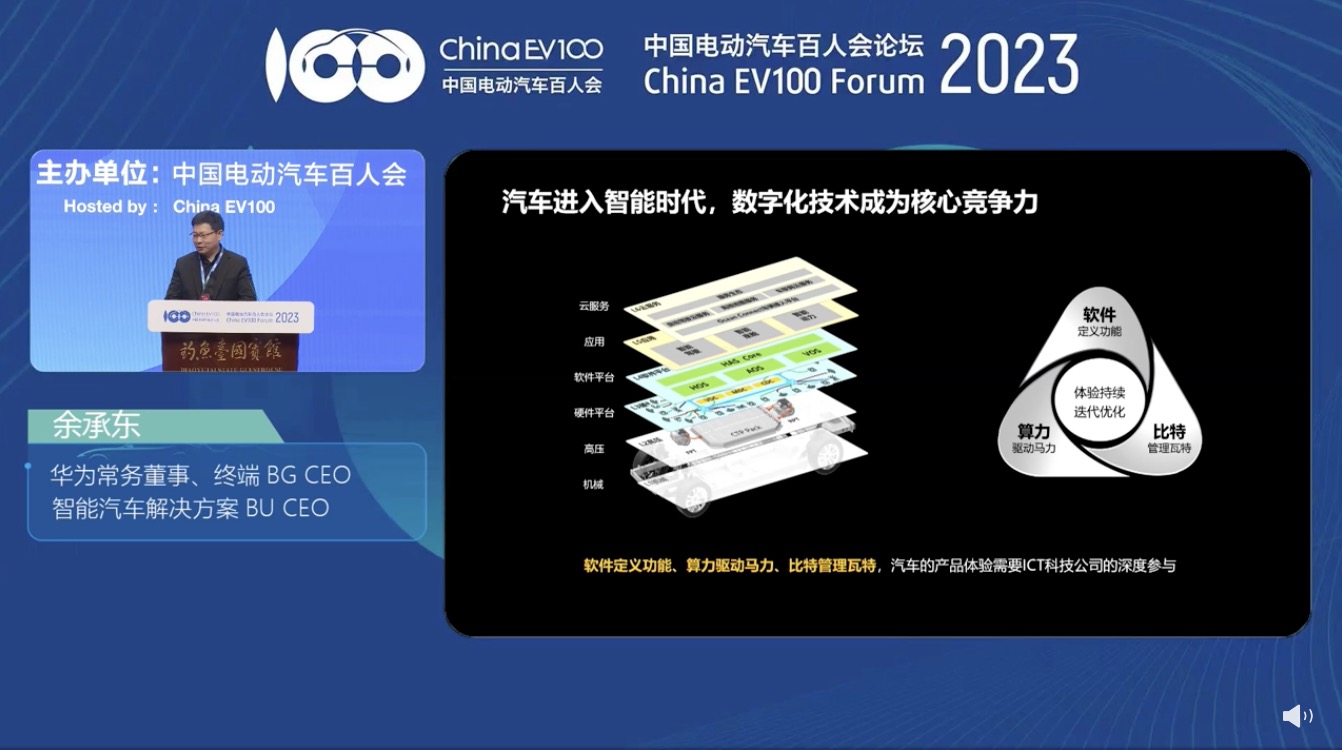Hosted by the China Electric Vehicle 100 (CEV100) and co-organized by Tsinghua University, China Society of Automotive Engineers, China Association of Automobile Manufacturers, China Automotive Technology and Research Center, and China Automotive Engineering Research Institute, the China Electric Vehicle 100 Forum (2023) opened in Beijing.
The forum invited representatives from governmental departments, automotive, energy, transportation, urban, and telecommunication sectors, focusing on in-depth discussions on a range of topics, including global automotive industry trends, high-quality development paths for new energy vehicles, China’s intelligent connected vehicle development strategy, trends in the core industry supply chain developments of power batteries, the transformation of a new generation of automotive consumption, strategies for the coordinated development of automotive and energy, new energy transportation systems, commercial vehicle transformation directions, innovative paths for the automotive aftermarket, and digitalization and intelligent manufacturing in the automotive industry.
At the 2023 China Electric Vehicle 100 Forum High-level Forum, Huawei’s Yu Chengdong delivered numerous memorable quotes in his speech while indirectly responding to some recent rumors:
-
Huawei invests 10 billion yuan annually in the field of intelligent vehicles, with over 7,000 employees, even exceeding 10,000 at present.
-
Huawei aims to lead globally in four areas: intelligent cabins, connected vehicles, intelligent driving, and new software-defined vehicle architectures.
-
Yu Chengdong uses intelligent driving assistance for his 30 km commute between his home and the office.
-
Huawei initially hoped to become a Tier 1 supplier, but it’s difficult in the age of automotive intelligence, which requires constant upgrades and integration.
-
The Huawei Inside model originally had three partners, but now it’s mainly Changan. GAC has abandoned the collaboration, and BAIC’s cooperation product is underperforming. Providing the best technology does not necessarily mean commercial success.
-
The Intelligent Selection Vehicle model represents Huawei’s experiences in the To C field being transferred to automakers. Huawei helped Seres achieve an order of magnitude improvement through its two-decade-old IPD model and quality management system.
-
Previously, Huawei’s mobile phone failure rate was many times that of Apple’s; but after Yu Chengdong took over, Apple’s mobile phone failure rate became many times that of Huawei’s.
-
In the Intelligent Selection Vehicle model, Huawei offers not only product solutions to automakers but also technological management systems.
-
Huawei is a sanctioned company, losing many overseas partners. Among Chinese automakers, newcomers like Li Xiang and Li Bin would not choose Huawei. Traditionally dominating automakers may choose Huawei, but those afraid of losing their “soul” wouldn’t. This inability to achieve a closed commercial loop is also why Yu Chengdong advocates for the Intelligent Selection Vehicle model.- Multiple car manufacturers are set to collaborate with Huawei this year, but they encountered marketing challenges. Hence, the emergence of the “HUAWEI Wonderview” brand campaign, which does not imply that Huawei is manufacturing cars.
-
Collaborations between different car manufacturers and Huawei are not conflicting, as various car models are involved. Huawei aims to create a product portfolio with its high-quality and stringent system to achieve commercial success together.
-
In terms of self-reliance, Huawei has developed three major operating systems for smart cars: the cockpit OS Harmony OS, the intelligent driving OS AOS, and the vehicle control OS VOS. The systems are not yet fully open-source, as there are significant investments involved and commercial concerns to consider.
-
Yu Chengdong concluded: Deep-rooted intelligence in cars is essential to constructing an autonomous and controllable automotive industry chain.
This article is a translation by ChatGPT of a Chinese report from 42HOW. If you have any questions about it, please email bd@42how.com.
